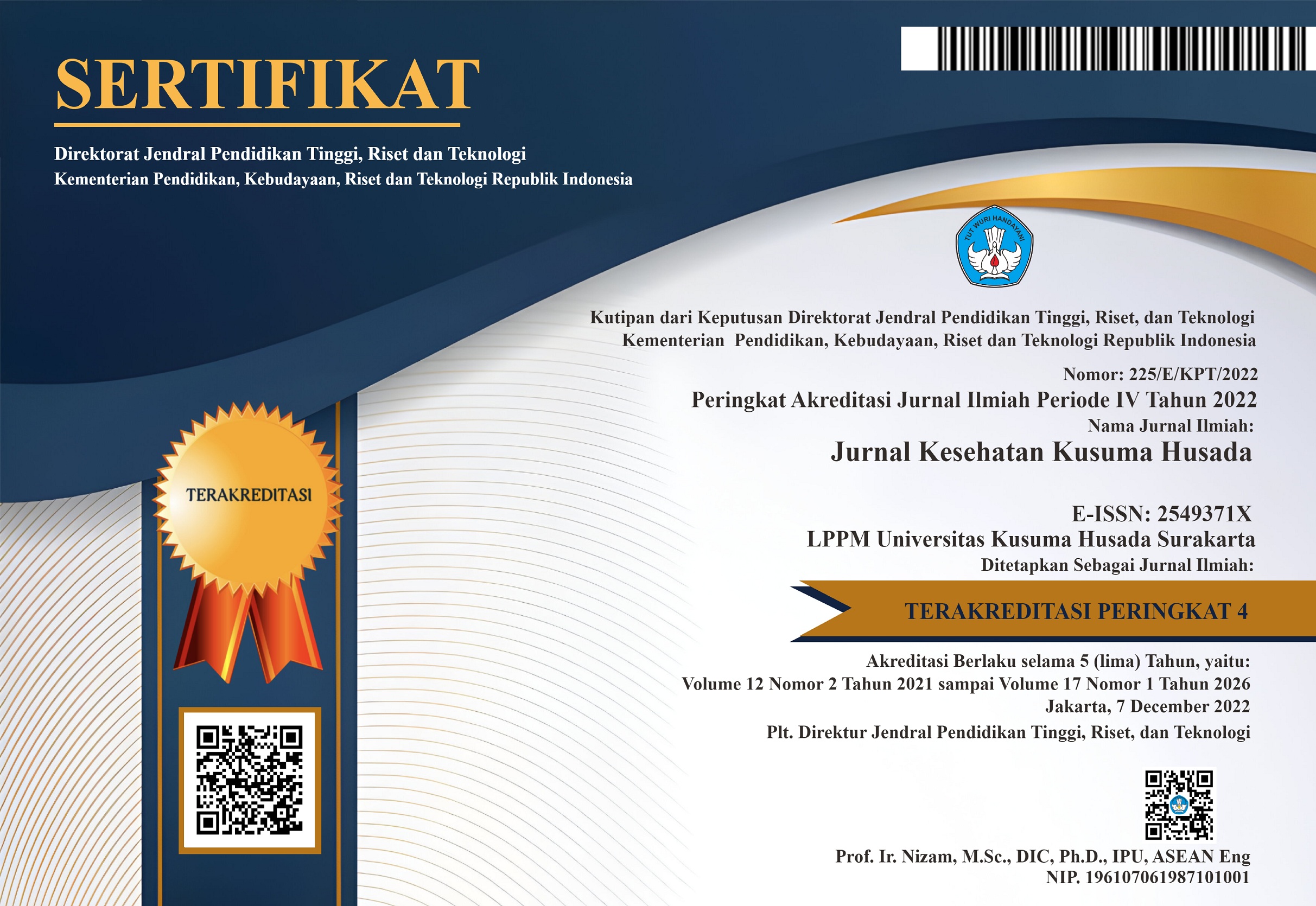ANALISIS RANCANGAN PROTOTIPE PATIENT SELF-REPORTING SYSTEM UNTUK PERCEPATAN DETEKSI DINI POSTPARTUM BLUES MELALUI PENDEKATAN USER-CENTERED DESIGN
DOI:
https://doi.org/10.34035/jk.v15i1.1264Keywords:
patient self-reporting system, user-centered design, prototipe, deteksi dini, postpartum blues, early detectionAbstract
Ibu postpartum yang mengalami blues dan tidak segera mendapatkan penanganan rentan mengalami depresi, kekambuhan pada kehamilan dan persalinan selanjutnya serta berisiko tinggi melakukan bunuh diri. Adapun skrining kejadian blues yang selama ini dilakukan dengan menggunakan kuesioner Edinburgh Postnatal Depression Scale (EPDS) masih menggunakan bentuk konvensional (kertas) dan hanya dinilai oleh tenaga kesehatan. Di sisi lain, patient self-reporting system memudahkan ibu postpartum untuk dapat menilai sendiri tanda dan gejala yang dialami dengan melakukan deteksi dini dan skrining postpartum blues secara mandiri dari mana saja dan kapan saja. Tujuan penelitian ini adalah untuk menghasilkan sebuah rancangan prototipe self-reporting system yang mampu menjadi media lapor diri ibu postpartum dalam mentracking tanda dan gejala blues dan melakukan intervensi sederhana untuk meningkatkan suasana (mood) saat blues terjadi. Metode penelitian yang digunakan dalam penelitian ini adalah perancangan prototipe postpartum blues self-reporting system dan user interface serta analisis dengan pendekatan user-centered design dengan melibatkan dua UI/UX Specialist. Instrumen yang digunakan dalam penelitian ini adalah User Experience Questionnaire (UEQ). Hasil analisis user centered design menunjukkan prototipe Sejati! Go mendapatkan evaluasi positif dalam ketiga aspek attractiveness, pragmatic quality dan hedonic quality. Sedangkan dalam pengukuran benchmark, hanya aspek dependability berada pada kategori below average. Penelitian ini memerlukan pengembangan dalam dependability dengan mengimplemantasikan robust error handling. Penelitian ini juga merekomendasikan prototipe Sejati! Go siap untuk dikembangkan ke tahap lanjutan usability study baik itu sofware deployment maupun mobile application testing dan diuji secara langsung ke calon user (penderita, suami, dokter spesialis kandungan dan kebidanan, psikolog, dokter umum, perawat, bidan dan kader).
Postpartum mothers who experience baby blues and do not receive immediate treatment are at risk of developing depression and an increased risk of suicide. Screening for the blues, which has been done using the Edinburgh Postnatal Depression Scale (EPDS) questionnaire, is still in a conventional form (paper) and is only assessed by healthcare workers. On the other hand, patient self-reporting systems make it easier for postpartum mothers to identify their signs and symptoms from anywhere and anytime independently. This study aimed to produce a prototype design of a self-reporting system for mothers in tracking postpartum blues signs and symptoms so that they could apply home-based interventions to improve their mood when the blues occur. The research method used in this study was designing a prototype and user interface of a postpartum blues self-reporting system with a user-centered design approach. This study involved two UI/UX Specialists. The instrument used was the User Experience Questionnaire (UEQ). The results of the user-centered design analysis showed that the Sejati! Go prototype received positive evaluations in all three aspects: attractiveness, pragmatic quality, and hedonic quality. However, only the dependability aspect was in the below-average category in the benchmark measurement. This study requires development in dependability, specifically in robust error handling. This study also recommends that the Sejati! Go prototype can be further proceeded to usability study, both software deployment and mobile application testing with potential users (patients, husbands, obstetrician and gynecologists, psychologists, general practitioners, nurses, midwives, and cadres) to assess the user experience.
Downloads
Published
Issue
Section
License
The copyright of the published articles belongs to Jurnal Kesehatan Kusuma Husada.

This work is licensed under a Creative Commons Attribution 4.0 International License.
















